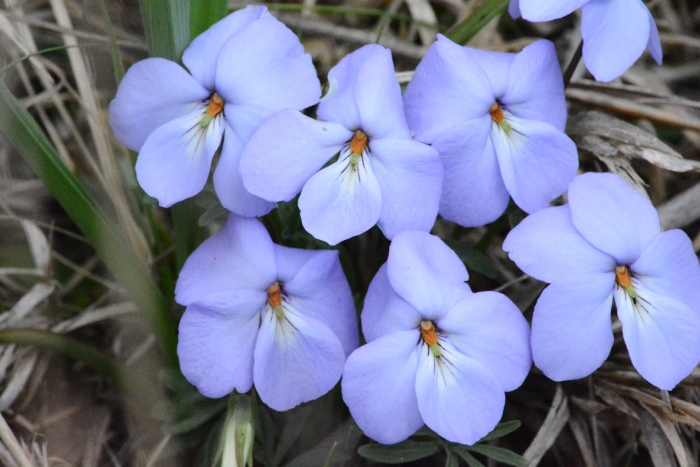Bird’s-Foot Violet
(Viola pedata)
Bird’s-Foot Violet (Viola pedata)
/
/

Trevor Edmonson
CC BY 4.0




















































Estimated Native Range
Summary
Bird’s-foot Violet is appreciated for its drought tolerance and ability to thrive in poor, acidic soils, making it suitable for rock gardens, native plant gardens, and restoration projects. It is also used to attract and support native pollinators. While it can be challenging to establish in typical garden settings due to its specific soil requirements, it requires minimal maintenance once established. It prefers full to partial sun and well-drained, acidic soils. Overwatering or rich, organic soils can be detrimental to its health. There are no major disease problems, but it can suffer from root rot if the soil is not well-drained.CC BY-SA 4.0
Plant Description
- Plant Type: Herb
- Height: 0.3-0.5 feet
- Width: 0.3-0.5 feet
- Growth Rate: Slow
- Flower Color: Blue, Purple
- Flowering Season: Spring
- Leaf Retention: Evergreen
Growth Requirements
- Sun: Full Sun, Part Shade
- Water: Low, Medium
- Drainage: Slow, Medium, Fast
Common Uses
Bank Stabilization, Bee Garden, Bird Garden, Border Plant, Butterfly Garden, Deer Resistant, Drought Tolerant, Edible*Disclaimer: Easyscape's listed plant edibility is for informational use. Always verify the safety and proper identification of any plant before consumption., Fire Resistant, Groundcover, Low Maintenance, Potted Plant, Rock Garden, Showy Flowers
Natural Habitat
Native to dry, sandy areas and open woodlands in central and eastern North America
Other Names
Common Names: Bird’s-Foot Violet, Mountain Pansy, Birdfoot Pansy, Crowfoot, Pansy Violet, Bird-Foot Violet, Crowfoot Violet, Violette Pied-D’Oiseau, Violette Pédalée, Fågelviol
Scientific Names: , Viola pedata, Viola atropurpurea, Viola pedata f. pedata, Viola pedata var. lineariloba, Viola pedata f. rosea, Viola ampliata, Viola redunca, Viola pedata var. bicolor, Viola digitata
GBIF Accepted Name: Viola pedata L.